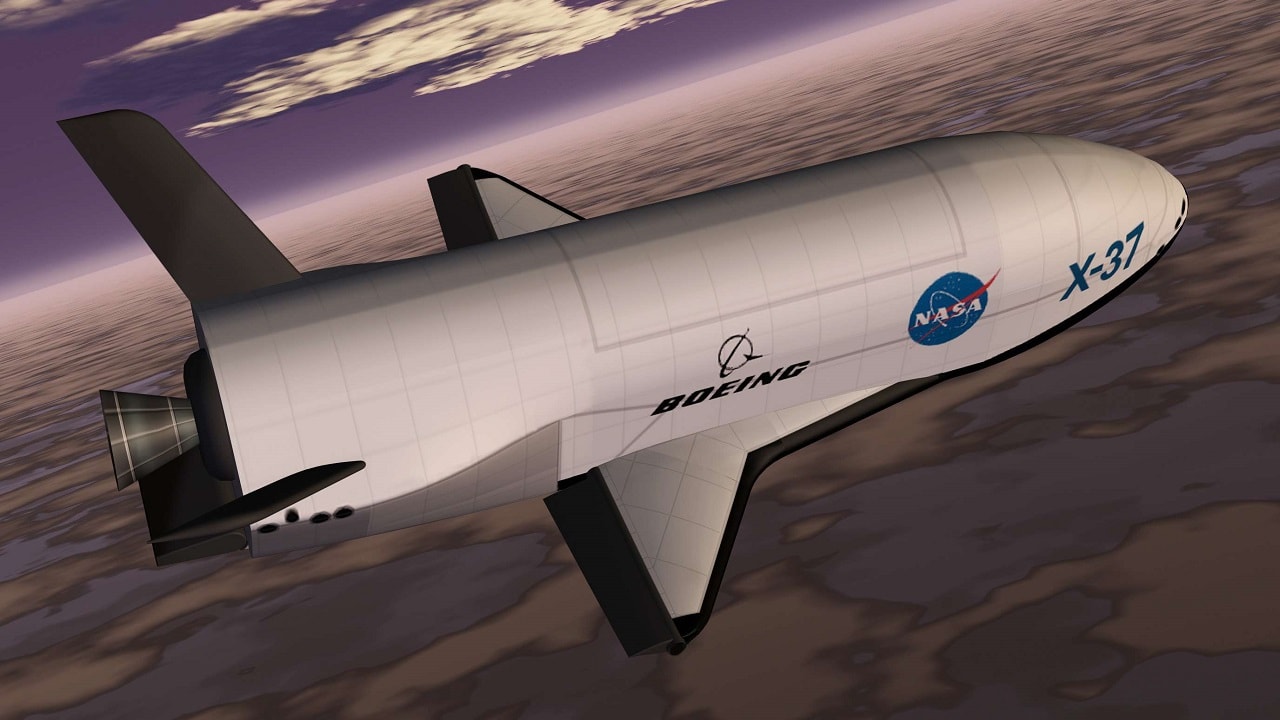X-37B: Do Russia and China Have Something to Worry About?
Little is known about the Boeing X-37B – an unmanned, reusable spacecraft that has been shrouded in secrecy since its first flight in 2006.
Little is known about the Boeing X-37B – an unmanned, reusable spacecraft that has been shrouded in secrecy since its first flight in 2006. The U.S. Air Force has been operating the X-37B, running tests and missions, the nature of which have not been publicly disclosed – which leaves the public, and America’s geopolitical rivals, to speculate.
X-37B: Reusable Space Tech
What we do know about the X-37B is that the spacecraft is reusable. Following in the footsteps of the Space Shuttle, comparable to SpaceX’s Falcon rocket, the X-37B can be used for multiple space missions. Reusable technology is of course helpful in keeping costs down in a budgetary environment that is less generous towards space-related activities (relative to the Cold War peak).
At the peak of the Cold War, the space-related budget was exponentially larger than today, when competition with the Soviets incentivized Americans to invest heavily in space. Consider the Apollo program, which landed men on the surface of the moon, and remains humankind's hallmark spaceflight achievement. During the Apollo program, the U.S. spent the equivalent of $257 billion (in 2020 dollars) over a 13-year period (1960-1973). To put that in perspective, NASA’s entire budget for 2021 was $23 billion. The American public simply isn’t willing to fund spaceflight as generously as during the Cold War.
The heavy spending trends of the Cold War, paired with a more blasé attitude towards material conservation, contributed to the development of spacecraft that was used once – and then discarded. The Mercury capsules, the Gemini capsules, the Apollo capsules (and Lunar Module). All were used once and discarded. Granted, the early NASA spacecraft designs were not solely the result of budget and conservation attitudes – available technology also played a significant role – but the one-off spacecraft was representative of Cold War spaceflight.
Well, the X-37B is representative of twenty-first-century spaceflight – where taxpayers want more return on their investment and where citizens are more conscious of material wastefulness. Indeed, reusable materials are often marketed as a sustainability initiative. But reusable materials can also help keep costs down. If I had to guess, Boeing and the Air Force are more concerned with the costs of the program than with environmental sustainability.
What We Know
The X-37B was developed from the Boeing X-40. Actually, the X-37 is a 120 percent scaled derivative of the X-40. The project commenced in 1999 when NASA selected Boeing to create an orbital vehicle. The development lasted four years, over which NASA invested $109 million in the project (The U.S. Air Force and Boeing also invested, $16 and $67 million respectively). From the investment came a functional X-37B – a reusable orbital vehicle with spaceflight characteristics, including the lift-to-drag ratio, comparable to the Space Shuttle.
After the initial development period, NASA transferred the X-37B program to the Defense Advanced Research Projects Agency (DARPA), where the program has been closely guarded since 2004. DARPA is notoriously secretive, although, they have allowed for some insights into the X-37B.
For example, we know that in 2005, the X-37 was attached beneath the wing of a Scaled Composites White Knight high-altitude research plane. The arrangement was similar to mid-century tests, in which the X-1, or the X-15, were ferried to altitude beneath the wing of a B-52 mothership and dropped into the sky.

The X-37B wasn’t dropped from the wing, however. Not during that first 2005 flight, at least. After the 2005 flight, the X-37B was analyzed, and subjected to structural upgrades. Plans were devised to perform the first drop test from beneath the wing of the White Knight.
The X-37B was first dropped from the White Knight on April 7, 2006. For the first test, the X-37 did not have an intact propulsion system, so it could not power itself; instead, the spacecraft merely glided back to Earth. The glide back to Earth went as planned. The landing did not, however. The X-37 overran the runway and sustained some minor damage.
The X-37B has since been launched into space. The first space launch, designated OTV-1, occurred in April 2010. The X-37B was attached to an Atlas V rocket and successfully launched into orbit.
We still don’t know very much about the X-37B’s spaceflight career. Curiously, amateur astronomers reported having seen the X-37B in low Earth orbit, circling the globe once every 90 minutes. But that hasn’t been confirmed. We know very little aside from the fact that OTV-1 remained in orbit for 224 days.
We also know that since OTV-1, several missions have taken the X-37B to space. The most recent was OTV-6 in December 2020, which set a record for time aloft with 908 days. OTV-7 is scheduled for December of this year. OTV-7 will ride to orbit aboard SpaceX’s Falcon rocket.
About the Author
Harrison Kass is a prolific writer and national security expert. An attorney, pilot, guitarist, and minor pro hockey player, Harrison joined the US Air Force as a Pilot Trainee but was medically discharged. Harrison holds a BA from Lake Forest College, a JD from the University of Oregon, and an MA from New York University. Harrison listens to Dokken.


